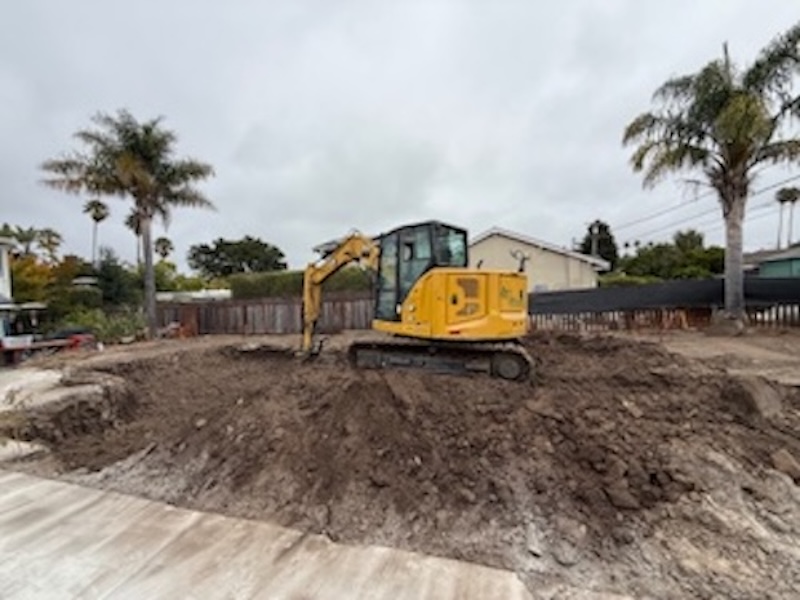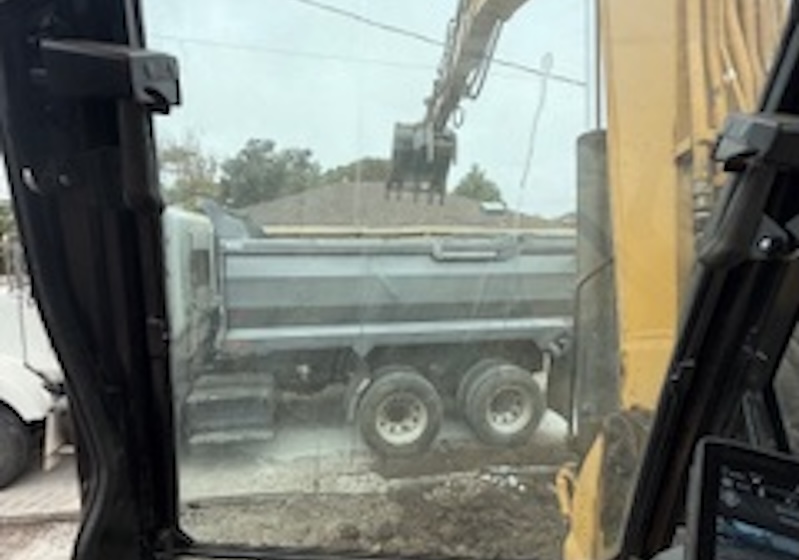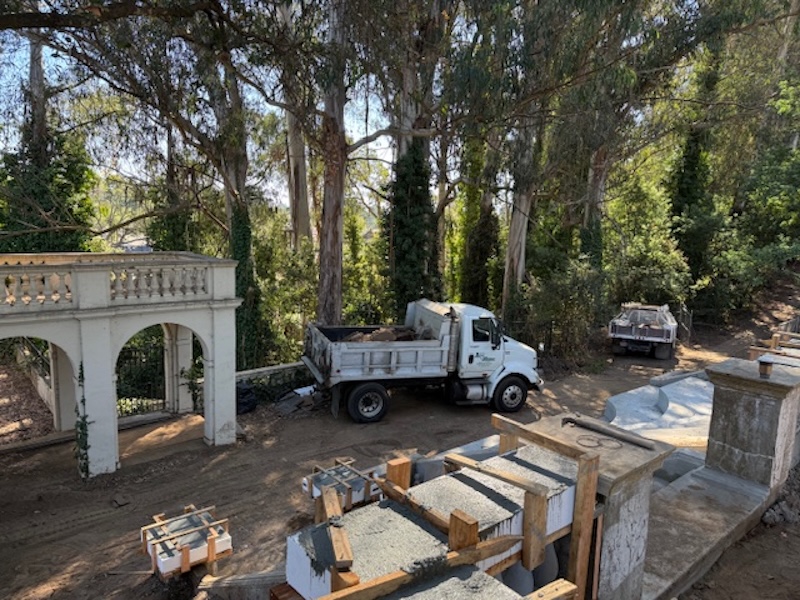Preparing a building pad is the first and most important step when constructing a new home, garage, or outbuilding.
With decades of experience across Santa Cruz, Monterey, and Santa Clara Counties, we know a well-prepared site is the key to a successful build.
This guide walks you through each step of building pad preparation for a concrete slab foundation.
Key Takeaways
- A properly prepared building pad is critical to avoid foundation cracks, uneven settling, and drainage problems.
- To prepare a building pad, clear the site, excavate, add fill, compact in layers, grade for drainage, lay a gravel base, and set up formwork.
- For best results, call Betz Works to ensure your building pad meets local codes and supports a solid foundation: 831-400-8466
How to Prepare a Building Pad: Step-by-Step

Step 1: Clear and Mark the Site
Remove all organic material
Start by clearing the site of trees, roots, brush, grass, and debris. Organic matter breaks down over time and can destabilize your foundation.
Strip topsoil
Use a skid steer or excavator to remove topsoil until you reach stable subsoil (clay or sand). Topsoil is too soft and nutrient-rich to support a structure.
Mark your layout
Use stakes and string lines to define the perimeter of the building pad. Confirm square corners using the 3-4-5 triangle method.
Step 2: Add Fill Dirt and Compact in Lifts
Add clean fill dirt
Fill low areas with clean, compactable soil (no debris, roots, or clay clumps). This helps raise the pad to the proper elevation.
Compact in layers
Spread the fill in 4-6 inch “lifts” and compact each layer using a plate compactor or roller. This prevents future settling.
Maintain proper slope
Ensure the pad is slightly higher than surrounding areas and slopes away from the structure. This helps shed water and prevent erosion.
Step 3: Prepare the Base Layer
Add gravel or crushed stone
Spread 4–6 inches of compacted gravel or crushed rock across the pad. This provides a firm base and excellent drainage for the concrete slab.
Lay a moisture barrier
Install a plastic vapor barrier (usually 6 mil or thicker) over the gravel. This prevents ground moisture from rising through the slab.
Add rebar or wire mesh
Place reinforcement per your building plans. Rebar or welded wire mesh helps reduce cracking and adds structural strength.
Step 4: Install Formwork and Schedule Inspection
Build your forms
Use straight 2×6 or 2×8 boards to create a perimeter around the pad. Secure them with stakes and ensure they’re level and square.
Check elevation and slope
Double-check the height and slope of your forms using a laser level or string line.
Schedule inspection
Before pouring concrete, call in a structural engineer or building inspector to verify compaction and elevation, especially if required by your local building code.
Should You DIY or Call Betz Works?

If you’re confident using excavation and compaction equipment and understand grading principles, you can tackle pad preparation yourself.
But keep in mind:
- Improper compaction leads to settling and structural issues.
- Inadequate drainage causes erosion and water damage.
- Local codes may require professional compaction testing or inspection.
Betz Works offers professional grading and building pad services across Santa Cruz, Monterey, and Santa Clara Counties.
We handle everything from site clearing to final grading, including coordination with surveyors and inspectors.
Need Help Preparing a Building Pad? Let Betz Works Handle It!
Betz Works specializes in building pad services across Santa Cruz, Monterey, and Santa Clara Counties.
We combine deep local knowledge of soil, terrain, and permitting to deliver pads that meet code and support long-lasting foundations.
Call 831-400-8466 or request a free estimate online.
FAQ
Why is house pad preparation necessary?
Without proper pad prep, your foundation may settle unevenly, crack, or develop drainage issues.
Preparation ensures the ground is level, compacted, and stable enough to support your structure for the long term.
How long should a house pad sit before building on it?
Once the pad is compacted and inspected, most builders can begin construction right away.
However, in wet conditions or after recent fill work, it’s smart to wait a few days to allow moisture to settle or drainage to stabilize.
What is the best material to build a house pad?
The best base materials are clean, compactable fill dirt topped with a layer of crushed stone or gravel.
These materials allow for proper compaction and drainage, helping to support the concrete slab above.

